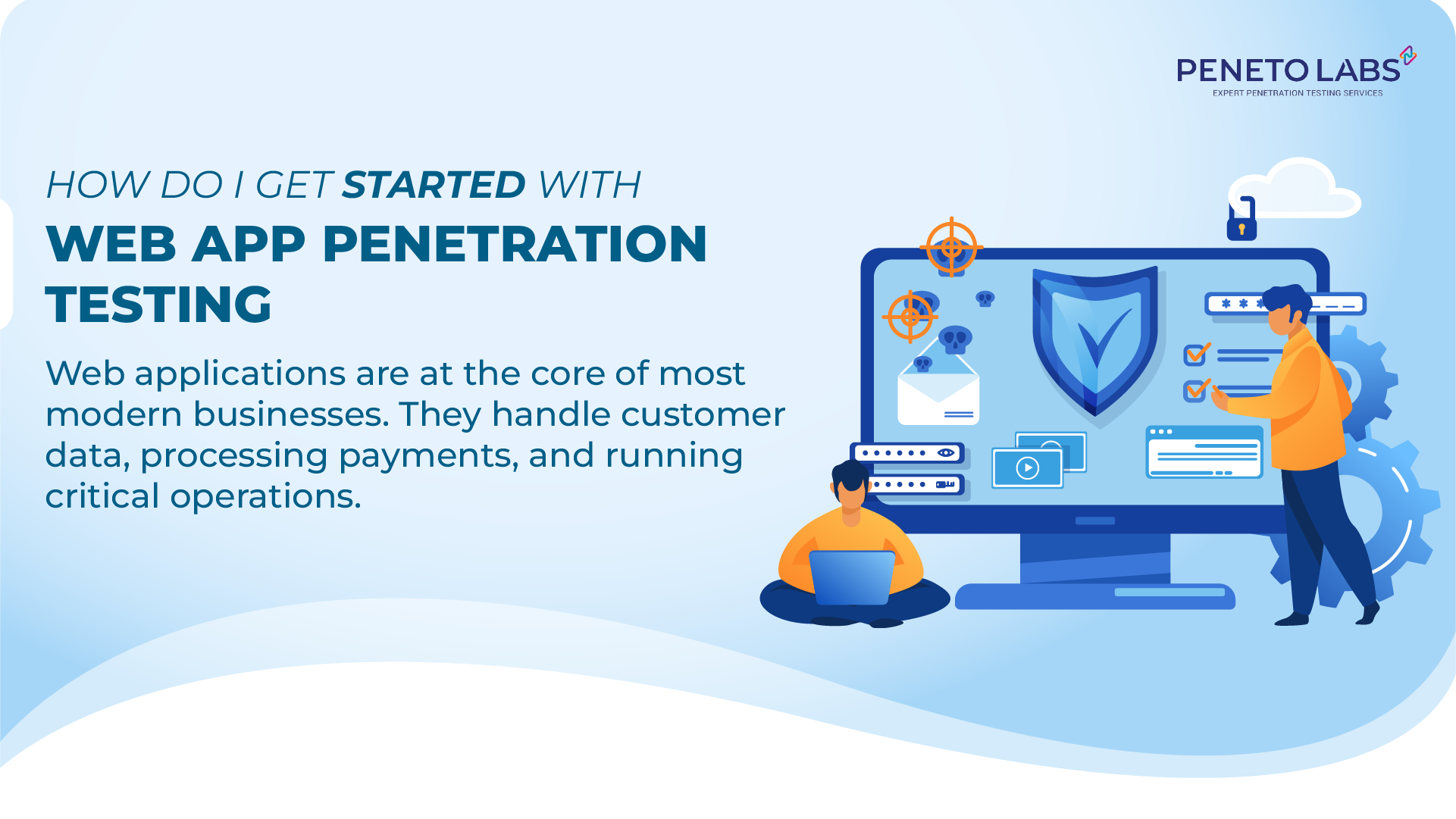Web applications are at the core of most modern businesses. They handle customer data, processing payments, and running critical operations.
Web application attacks account for 26% of all breaches, making them the second most common type of attack. This stat from Verizon’s 2024 Data Breach report indicates that cybercriminals constantly look for vulnerabilities they can exploit in web applications.
If you’ve been wondering “How do I get started with web application penetration testing?”—this guide will walk you through every step, so you can strengthen your security posture before attackers take any action.
1. Understand What Web Application Penetration Testing Is
Web Application Penetration Testing (Web App Pentest) is a simulated cyberattack on your application. The goal is to identify vulnerabilities—before real hackers do, so they can be fixed.
It’s more than just running an automated scanner. A proper pentest involves:
-
- Manual testing to find business logic flaws.
-
- Automated scanning to detect common vulnerabilities.
-
- Detailed reporting with risk severity and remediation steps.
2. Know Why Your Business Needs It
Pentesting isn’t just for large enterprises—it’s crucial for startups, SaaS providers, e-commerce platforms, and fintech companies.
Benefits include:
-
- Preventing costly data breaches.
-
- Meeting compliance requirements.
-
- Building trust with customers and investors.
-
- Identifying misconfigurations before they’re exploited.
3. Choose the Right Testing Approach
Before starting, decide which type of test suits your needs:
-
- Black Box Testing: Testers have no prior knowledge of your application. Simulates an external attack.
-
- White Box Testing: Testers have full access to source code and architecture. This testing is great for thorough coverage.
-
- Grey Box Testing: Testers get partial access, simulating an insider or a user with limited privileges.
4. Define Your Scope Clearly
A vague scope wastes time and money. Clearly list:
-
- URLs, APIs, and portals to be tested.
-
- Technology stack (frameworks, languages, databases).
-
- User roles to simulate (admin, regular user, guest).
This ensures the pentest covers all critical functionalities without testing irrelevant components.
5. Select a Trusted Web Application Penetration Testing Vendor
Your pentest is only as good as the people doing it. Look for:
-
- CERT-In empanelled vendors for regulatory compliance.
-
- Certified testers (OSCP, GWAPT, GCIH).
-
- Proven experience with your industry.
For example, Peneto Labs in Chennai is one of India’s leading web app penetration testing providers. Peneto Labs has been empanelled by CERT-In to conduct information security auditing services. With manual + automated testing, free retesting, and audit-ready reports, they help SaaS, fintech, and enterprise companies secure their apps efficiently.
6. Prepare Your Web Application for Testing
Before starting the test:
-
- Backup your web application and databases.
-
- Ensure a staging environment is available (if live testing isn’t possible).
-
- Provide necessary access credentials.
-
- Disable security controls only if required and agreed upon.
7. Let the Experts Do Their Job
A professional pentest typically includes:
1. Reconnaissance – Gathering public and internal information.
2. Scanning – Identifying open ports, endpoints, and attack surfaces.
3. Exploitation – Attempting to exploit vulnerabilities safely.
4. Post-Exploitation – Determining data access, privilege escalation, and potential business impact.
8. Review the Pentest Report Thoroughly
A good report should include:
-
- Vulnerability description.
-
- CVSS severity rating.
-
- Business impact explanation.
-
- Step-by-step remediation guidance.
Peneto Labs provides clear, compliance-ready reports aligned with regulatory guidelines—making it easier for CISOs and compliance teams to act.
9. Fix the Vulnerabilities
Pentesting without fixing issues is pointless. Work with your dev team to:
-
- Patch software and frameworks.
-
- Harden authentication and session management.
-
- Validate all user inputs.
-
- Configure secure error handling.
10. Retest to Verify Fixes
Once fixes are applied, request a retest. This confirms that vulnerabilities are patched and no new ones were introduced during remediation. Peneto Labs offers free retesting within the audit window—saving both time and cost.
Final Thoughts
Getting started with web application penetration testing isn’t complicated—but it does require planning, the right vendor, and follow-through. If you’re a SaaS provider, fintech firm, or enterprise managing sensitive user data, don’t wait for a breach to test your security.
At Peneto Labs, we believe that no company should suffer from cyberattcks and have helped hundreds of businesses uncover hidden risks, meet compliance, and build customer trust. Ready to secure your app? Contact Peneto Labs for a zero-obligation consultation today.
